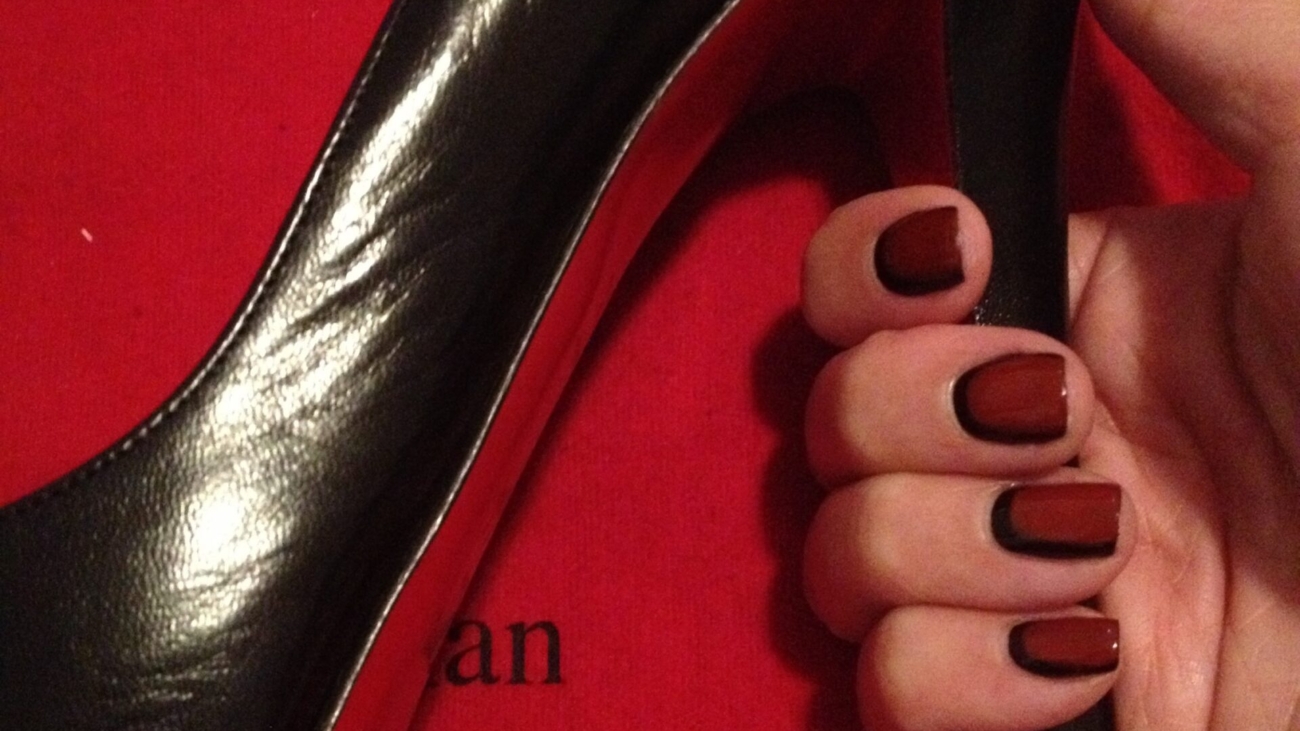A long time ago people walked and even ran without shoes. Up hills, down rocky canyons, and even across the grasslands they were barefoot. Then came sandals, running shoes and at some point, we even got Kinky Boots.
I saw the musical and enjoyed it, but I digress. Just like everything else these days, we have a ton of options for our feet.

This post is not going to be about fashion, but I’ve been told that the incredible discomfort of wearing a certain shoe with a red bottom is well worth it.
Did you know that the body is a super structure and the feet are the built-in base of the structure? The feet are designed to be capable, strong and mobile.
When we smash our toes in certain shoes, it is the same thing as taking color out of our vision. Life becomes a little less interesting without color.
What should you wear when you strength train? It depends. You may have to ease into it, but here are a two of the top reasons I go barefoot or minimalist (thin-soled) shoe.
-
I’ve accepted that I have ugly feet and I am ok with that.
-
Going barefoot allows for better proprioception. This can be thought of as the brain’s ability to know where the body is in space and time, without keeping constant conscious awareness of it and the world around it.
For example, the body moves and then the information about this is returned to the brain, whereby subsequent adjustments could be made.
We were born to have the toes wide in order to have a stable base of support. The better the toes move, the more information the foot is able to take in, and this allows the body to move better.
When the foot and toes are smashed in a shoe, the stabilizers are not going to get enough information.
If you don’t have to protect your feet from the cold or from sharp things, then try to go barefoot. You can start with simply walking around the house for a bit when you get home.
Barefoot walking will allow for big toe dorsiflexion. The ability to flex that big toe leads to better movement up the body. Shoes don’t (unless they allow for wide splaying of the toes and zero drop).
When wearing stiff, thick-soled, highly cushioned shoes, we decrease natural foot mobility and the proprioceptive input of the feet by essentially putting them in casts.
There is no connection to the ground. This ‘connection’, also called ‘rooting’ is well established in martial arts and very important when strength training.
When approaching strength training, think of it as learning a new skill. One of the first steps in movement training is to be generally aware of the body and technique.
Awareness allows us to influence how the body is aligned through the contact of our feet and the ground.
This is not possible without proprioception. Having the feet closer to and more aware of the ground will not only improve proprioception, but also make the feet stronger and more resistant to injury.
Training barefoot or with thin-soled shoes also prevents the raised heel built into many sport shoes. This heel shifts the center of gravity forward, which deactivates the backside of the body (the kinetic chain) and places more emphasis on the quads.
Your core receives less information and undue stress is placed on the back. All of this forces us into improper body mechanics and makes us more susceptible to injury.
Proper body mechanics not only allow more force generation (= stronger), it also protects joints and connective tissue from injury.
So what is the best shoe to strength train with? If you have been wearing thick-soled and highly cushioned shoes for years, jumping into training barefoot right away might not be the best idea.
Look for shoes that are slightly less raised and gradually work yourself down to a thin and flexible sole so that it can bend in half at the arch.
Before going barefoot or training with a minimalist shoe, think about your range of motion and the strength and stability of the joints.
How much weight would you load onto a weak and unstable shoulder? Probably not your entire body weight!
Here is one way to give your feet more sensory information and make them stronger.
Yes,I’m standing on a box of rocks, but I am also having a single malt scotch on the rocks for the win!
Notice the focus of this post has been on strength training and not running. Running is also a skill and deserves more information. Whatever you do, make sure your shoe is light weight. Every 500 grams on the foot equals 10 lbs on the back.
 Now, these shoes seem to be working for her!
Now, these shoes seem to be working for her!
-Oscar
Wah Lum Kung Fu and Tai Chi
Control Your Health
If you enjoyed the post, share it!
Need any help achieving your health and fitness goals? Send us a text message at 407-796-1781!
Control Your Health, Get FIT for LIFE.
Personal training programs in Orlando.
Want to get all of our blog posts delivered to your email with a taste of Wah Lum Kung Fu and Tai Chi? Sign up HERE!

